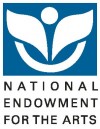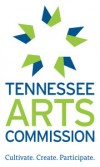Collage
Adaptable for K-5
Background Information on Myles Maillie
Myles Maillie has studios in both Nashville, Tennessee and Paris, France. Maillie’s works are bright and show strong use of visual texture as well as real texture. In Combing for Jimmy, Maillie has actually glued styrofoam pieces onto the canvas, and then reinforced this actual texture with visually dynamic pattern. In Combing for Jimmy, Maillie has made the viewer the mirror of this young girl. Like many young ladies, she appears to have several boyfriends who are pictured behind her. In this particular work she seems to be preparing for her date with Jimmy. Her bright dress on, her make-up fixed and her hair almost combed, she takes one last look in the mirror before her night on the town.
Myles Maillie has used a technique called collage. Collage is a work of art made by pasting various materials on a surface. Although Maillie has used canvas as his surface, and glued on styrofoam pieces, any material may be glued, and any surface may be used.
The objective of this lesson is for students to gain an understanding of the technique of collage and the art element of texture through a study of a work by the artist Myles Maillie and by creating their own original collage composition.
Materials:
Construction paper (one full sheet for each student for gluing surface and numerous colors of scraps), oil pastels or tempera paint, glue, slide of Combing for Jimmy.
Procedure:
1. Show slide and go over background information. It is good to do a critique with this work, and have students decide what they think the girl in the work is doing. Is the work sort of a mirror? Is she looking forward to their date? etc.
2. Go over collage technique. (See below.)
3. Tell students that they are going to create their own original collage using bright colors of construction paper.
4. Closure: Review terms and background information.
Steps for Collage:
A. Sketch out idea. This specific lesson is for a person, and patterns have been included, however, this is not by any means meant to be restrictive to either the student or the teacher. It is advised that you not only adapt this lesson for your individual needs, but change subject matter as desired. For example you might do a seascape collage (pattern sheet for this also included), or a forest collage (our gallery also owns the Forest by Maillie), or any other idea that might be appropriate.
B. Have students cut their shapes out of construction paper. Tell students to be creative with their colors, and that they do not have to use the usual skin colors for skin.
C. Glue the pieces down in the following order: body, head, dress, hair, accessories.
D. Add more texture and pattern. (dots, stripes, zigzags, wavy lines, etc.)
E. You can substitute yarn for hair, and material for clothes
F. Have students write a paragraph telling what their person is doing. (Getting dressed for work, going out to dinner, dressing for a ball game, getting ready for school…)
G. Closure: Review terms and background information.
IF POSSIBLE, PLAN A TRIP TO THE ART CENTER TO VIEW THE ACTUAL WORK WITH A GREATER UNDERSTANDING.
Evaluation of student work:
Teacher observation, participation, following of directions, neatness, completion, and design are all good criteria.


